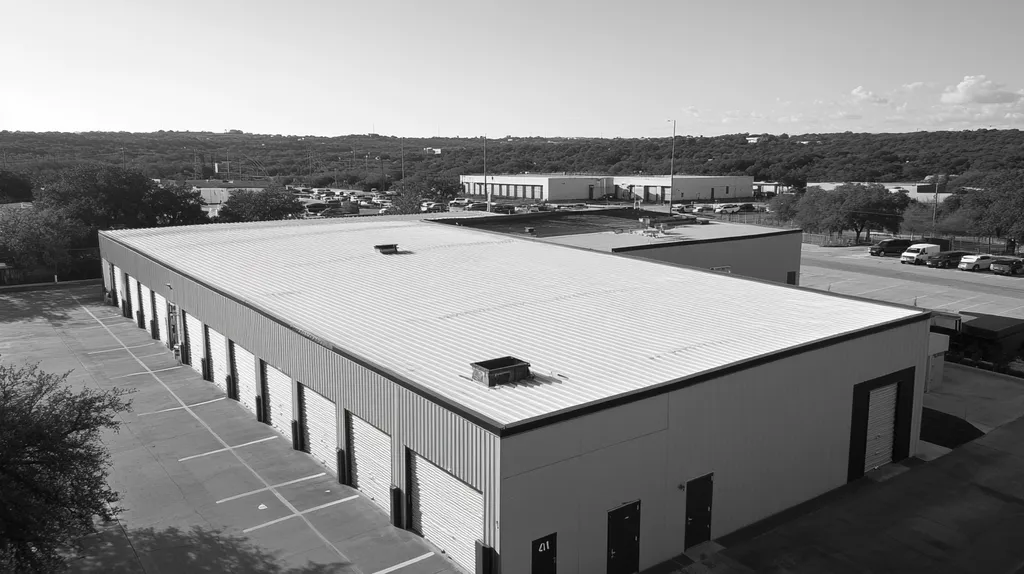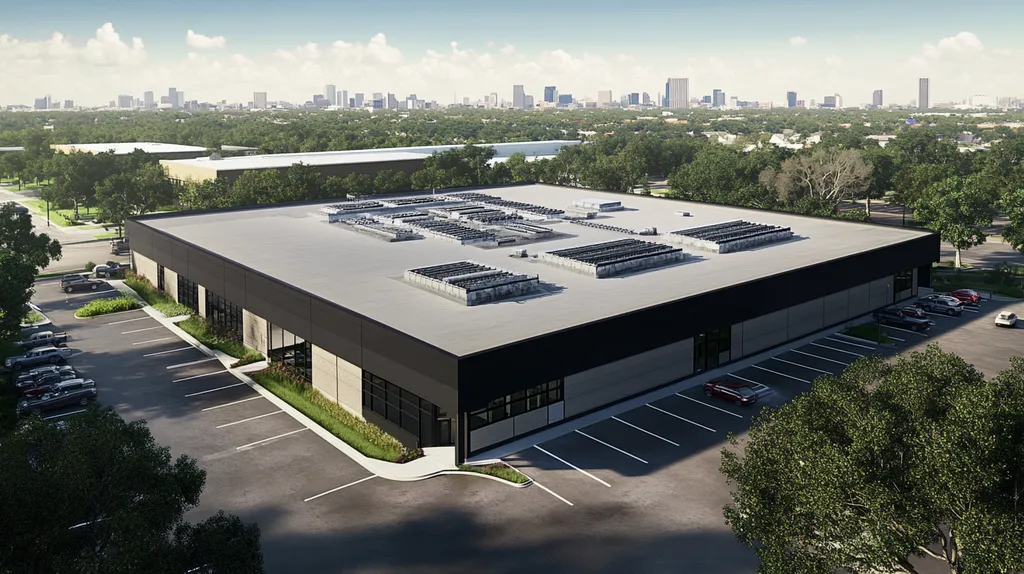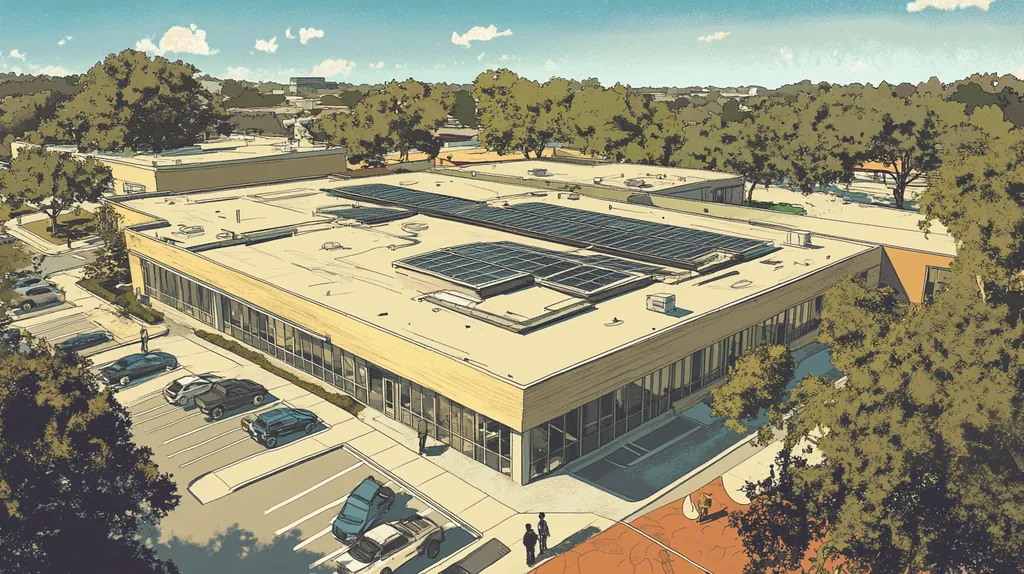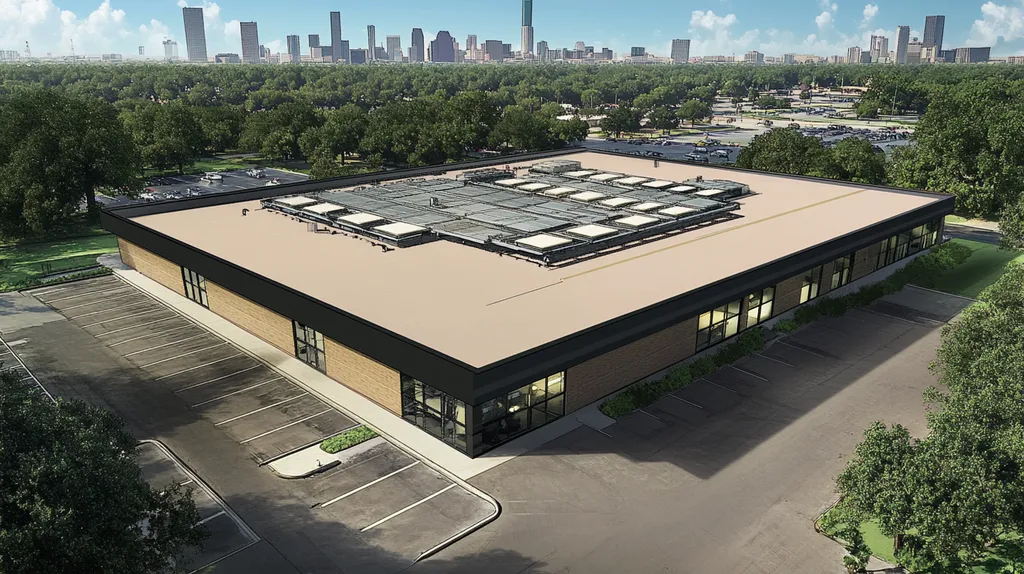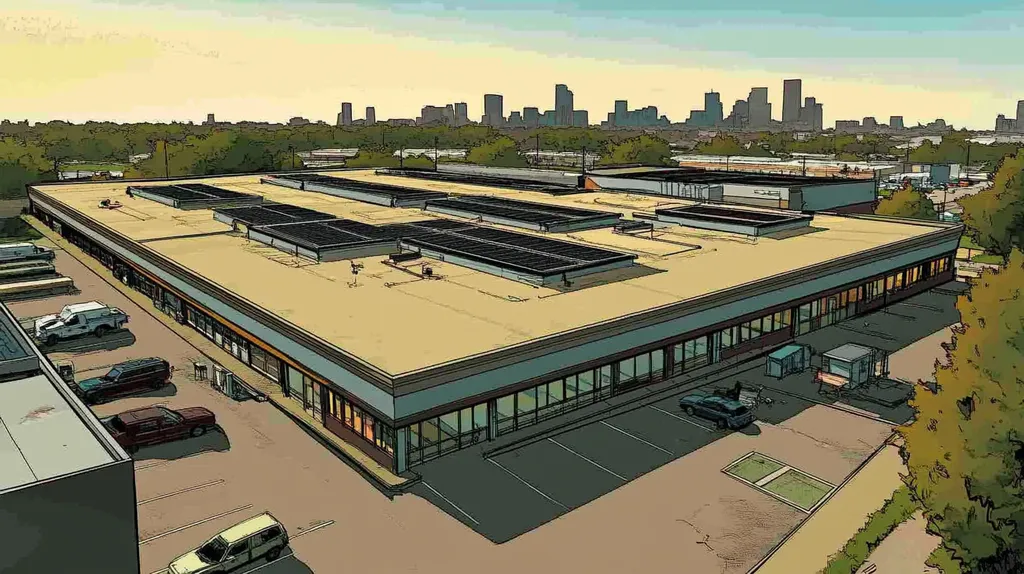Fire-related incidents caused over $3.2 billion in commercial property damage last year, with nearly 40% of these cases linked to inadequate roofing fire safety measures.
For property owners and facility managers, implementing proper fire safety standards isn’t just about meeting code requirements—it’s about protecting assets and lives.
This comprehensive guide examines critical factors in commercial roof fire safety, from material selection and performance ratings to compliance requirements and risk management strategies.
Through actionable checklists and expert insights, readers will learn how to evaluate, upgrade, and maintain their roofing systems to meet today’s stringent fire safety demands.
SECTION 1: PERFORMANCE FACTORS
Fire safety is a critical concern for commercial roofing, with fire-related incidents causing over $3 billion in damages in 2020 alone. Selecting appropriate roofing materials and systems can greatly reduce these risks. Property owners must familiarize themselves with crucial elements like fire resistance ratings, insulation practices, and sprinkler system integration to ensure compliance with safety standards. This section highlights these essential performance factors for a safer roofing solution.
Material Fire Resistance Ratings
Understanding material fire resistance ratings is fundamental in assessing how well roofing materials can handle heat and flames. For example, metal and certain types of modified bitumen often have higher ratings compared to traditional asphalt shingles. These ratings are vital for meeting fire safety regulations and ensuring the safest roofing options.
Building codes classify materials into various categories. Class A materials offer the highest fire resistance, whereas Class C materials provide the least protection. By investing in Class A materials, property owners can significantly lower their fire risk and potentially reduce insurance premiums.
It’s crucial to consider the entire roofing assembly, including underlayment and coatings. The safety of a roof can be compromised if a high-rated material is paired with lower-rated components. Regular evaluations and updates of roofing materials help ensure compliance with evolving fire safety regulations.
Key Action Items
Roof Insulation and Ventilation
Effective insulation and ventilation are vital for fire safety, as they help manage heat levels in commercial roofs. A well-designed roofing system prevents excessive thermal buildup, which can trigger fire ignition. For example, fiberglass insulation is known for both thermal efficiency and fire resistance.
Insufficient ventilation often traps heat, raising the likelihood of a fire starting. Implementing vents or choosing insulation with built-in ventilation features can significantly lower this risk, especially in roofs that support machines or are located near heat sources.
Regular inspections of insulation integrity are essential. Damaged insulation can negatively affect thermal performance and fire safety ratings. Working with roofing professionals to achieve a proper balance between insulation and ventilation ensures compliance with fire safety standards.
Key Action Items
Water Sprinkler System Compatibility
The performance of water sprinkler systems significantly affects fire safety in commercial roofs. An adequate water supply and proper coverage can effectively prevent the spread of fire, so it’s essential for roofing designs to accommodate these systems. Roof designs should enable straightforward installation of sprinkler heads without compromising other roofing components.
Poorly designed roofs can hinder sprinkler system effectiveness during an emergency. Collaborating with fire safety experts helps ensure that roofing systems are supportive of fire suppression technologies for optimal performance.
Routine maintenance is crucial for sprinkler systems, as neglected systems can experience decreased water pressure and efficiency. An integrated approach between roof design and sprinkler systems enhances overall fire safety and meets industry standards.
Key Action Items
SECTION 2: FINANCIAL CONSIDERATIONS
In today’s commercial and industrial landscape, fire safety is more than just a regulatory requirement; it is a strategic financial necessity. The consequences of overlooking fire safety can be severe, with recent data indicating that fire-related incidents have led to over $14 billion in property damage. By investing in fire-resistant roofing materials, property owners can significantly mitigate the costs associated with fire damage and enhance overall liability protection. This section delves into the financial aspects of adhering to fire safety standards, concentrating on material costs, potential insurance savings, and overall return on investment.
Cost of Fire-Resistant Materials
The initial expense of fire-resistant roofing materials might seem intimidating, yet the long-term savings they offer often outweigh the initial investment. Materials like metal and specific modified bitumen not only enhance safety but also provide added durability over time.
When weighing costs, property owners should consider that the difference in price between standard and fire-resistant roofing options can be minimal compared to the expense of repairing fire damage. Fire-resistant roofs play a vital role in preserving property values and avoiding costly repair bills.
Additionally, many building codes encourage the use of fire-rated materials, leading to potential rebates or tax incentives. Investing in fire-resistant options is thus not just a protective measure but also a wise financial decision.
Key Action Items
Insurance Premium Reductions
Potential savings on insurance premiums represent one of the most compelling financial advantages of investing in fire safety. Insurers frequently provide discounts for properties featuring enhanced fire protection measures, resulting in more affordable coverage.
For example, properties with fire-resistant roofing can receive discounts ranging from 10% to 30% on annual premiums—savings that accumulate significantly over the years and free up funds for vital business operations.
Moreover, a well-crafted fire safety plan simplifies the claims process during emergencies, enhancing interactions with insurers. By actively reducing risks, property owners can position themselves favorably from an insurance standpoint.
Key Action Items
ROI on Safety Enhancements
The return on investment (ROI) from safety enhancements in roofing can be substantial. Not only do fire safety standards result in reduced insurance costs, but they also protect properties from significant financial loss resulting from fire incidents.
Additionally, properties that invest in fire-resistant roofing often see an increase in market value. Buyers are inclined to favor properties equipped with advanced safety features, which leads to quicker sales and potentially higher offers.
Furthermore, implementing proactive safety measures can minimize operational disruptions due to fire-related events, allowing property owners to maintain a stable budget while guarding against unexpected expenses.
Key Action Items
SECTION 3: COMPLIANCE REQUIREMENTS
Meeting fire safety standards in commercial roofing is not just a regulatory checklist; it’s a vital part of protecting properties and lives. With over 15,000 commercial building fires reported yearly in the U.S., property managers must thoroughly understand compliance requirements to minimize risks effectively. This section explores essential regulations that impact the design and maintenance of commercial roofs.
NFPA 13 and Local Codes
The National Fire Protection Association (NFPA) produces crucial codes that govern fire safety, particularly NFPA 13, which outlines the installation standards for sprinkler systems. Many commercial roofs must incorporate sufficient fire suppression features in their design to comply with these regulations. Additionally, local building codes can impose further requirements, which may vary depending on the geographical area.
Commercial properties in states prone to wildfires, like California, often face stricter regulations than those in lower-risk areas such as Texas. Therefore, it’s imperative for property managers to regularly consult and remain updated on local codes to ensure compliance. Ignoring these regulations can lead not only to fines but also to increased liability during fire incidents.
Routine evaluations of existing roofs against NFPA standards are equally important. Compliance is an ongoing process that requires continuous updates to stay current with evolving codes and guidelines.
Key Action Items
OSHA Regulations for Roofing
The Occupational Safety and Health Administration (OSHA) establishes vital regulations to ensure safe practices in roofing work, primarily focusing on worker safety during installation and maintenance. These rules also support fire safety by ensuring roofs are installed and maintained in ways that reduce fire hazards.
For example, OSHA requires proper fall protection during roofing projects, which helps prevent accidents that might lead to flammable materials igniting. Additionally, roofers must follow guidelines governing the use of tools that could produce sparks, thereby minimizing fire risks during installation.
Adhering to OSHA regulations protects not only workers but also strengthens the integrity of the roofing system itself against fire threats. Property managers should emphasize training and awareness regarding these regulations to ensure a safer working environment.
Key Action Items
ICC Fire Rating Standards
The International Code Council (ICC) creates important codes that set fire rating standards for building materials, including roofing systems. These standards classify materials by their ability to resist ignition and the spread of flames, which is crucial for protecting commercial properties.
Class A materials offer the highest fire resistance, while Class C materials provide the least. To ensure adequate fire protection, property owners should aim for roofing materials that meet at least Class B standards, particularly in high-risk environments.
The method of installation is equally significant for compliance with ICC standards. Properly installed materials are not only compliant with fire ratings but also contribute to the roof’s overall durability, providing extra protection against fire hazards. Regular reviews and updates of roofing materials and installation techniques are vital for minimizing fire risks effectively.
Key Action Items
SECTION 4: RISK MANAGEMENT
Fire safety in commercial roofing goes beyond regulatory compliance; it is a vital risk management priority. With nearly 25% of all commercial building fires linked to roofing materials and systems, property owners and facility managers must proactively assess and address potential vulnerabilities. This section discusses effective fire hazard assessment techniques, risk mitigation strategies for high-risk areas, and the importance of emergency response planning.
Fire Hazard Assessment Techniques
Conducting a detailed fire hazard assessment is a critical step in risk management. Start with a thorough evaluation of roofing materials, ensuring fire-rated options are used whenever possible. Prioritizing these materials can minimize potential fire hazards significantly.
Next, assess the surrounding environment for risks. Properties near wooded areas, for instance, are more vulnerable due to dry vegetation. Regular inspections are key for spotting fire hazards like debris buildup or aging materials that may pose dangers.
Facility managers can also utilize fire modeling techniques, simulating fire spread to identify problem areas needing immediate intervention. Outcomes may include retrofitting roofs with fire-resistant coatings as necessary. Documenting all findings serves as a foundation for future evaluations and compliance actions.
Key Action Items
Risk Mitigation Strategies for High-Risk Areas
Proactively mitigating risks is essential, particularly in high-risk roofing areas. Regular assessments of roof sections housing mechanical equipment like HVAC units are necessary, as they can serve as ignition sources. Installing fire-resistant barriers around these systems can drastically reduce fire risks.
A landscape management plan is crucial. This plan should include the maintenance of flammable vegetation near the facility, effectively reducing wildfire threats. Also, keeping gutters and drainage systems clear prevents debris buildup that could ignite.
Creating firebreaks—areas free from combustible materials—can effectively slow or stop the spread of fire from nearby sources. Incorporating technology, such as heat detection sensors, can alert facility managers to temperature increases, facilitating rapid response.
Key Action Items
Emergency Response Planning
A practical emergency response plan is essential for effective risk management. Property professionals should develop clear procedures detailing steps to take during a fire, including designated evacuation routes and communication strategies.
Regular fire drills are vital for ensuring that all personnel understand their roles and responsibilities in emergencies. Familiarizing employees with evacuation procedures and the locations of fire extinguishers can save lives.
Establishing relationships with local fire departments is also beneficial. Regular communication with fire safety experts can enhance safety measures further. Keeping documentation of emergency plans enables property owners to refine their procedures, ensuring they maintain readiness for unforeseen events.
Key Action Items
SECTION 5: OPERATIONAL PROCEDURES
Ensuring fire safety on commercial roofs goes beyond compliance; it is crucial for safeguarding lives and properties. With approximately 70% of commercial buildings experiencing fire-related incidents, regularly implementing operational procedures can greatly influence outcomes during emergencies. Focusing on systematic inspections, well-planned maintenance schedules, and thorough training for emergency situations forms the backbone of an effective fire safety strategy.
Regular Roof Inspections
Routine roof inspections are essential for catching vulnerabilities that could elevate fire risks. These evaluations should occur at least twice a year and immediately following severe weather to identify issues like cracks or debris that need addressing.
During inspections, it’s vital to assess roof materials, flashing, and drainage systems for obstructions. Neglecting these checks could lead to water accumulation, which stresses the roof and heightens fire hazards.
Property managers must document all findings and actions taken, as this creates a vital resource for maintenance and supports compliance with insurance audit requirements. Utilizing tools such as infrared thermography can also help spot hidden hotspots, enhancing proactive fire safety measures.
Key Action Items
Maintenance Scheduling Best Practices
Setting up a regular maintenance schedule is critical for maintaining fire safety on roofs. Proactive maintenance can mitigate risks by addressing wear and potential hazards, such as combustible debris that may ignite.
Property managers should create a comprehensive checklist that encompasses all vital maintenance tasks, including inspecting HVAC systems for gas leaks and ensuring fire-resistant coatings remain effective. These practices can significantly reduce vulnerabilities.
It is also advisable to conduct maintenance during off-peak hours to minimize disruptions and allow for thorough inspections. Coordination with roofing contractors ensures timely responses to any unforeseen issues.
Key Action Items
Training for Emergency Situations
Having a solid emergency preparedness training program can significantly impact the outcome of a fire incident. Property managers should implement training sessions concentrated on fire safety protocols, evacuation strategies, and emergency contact information.
All staff must be familiar with critical procedures, like using fire extinguishers and locating emergency exits. Regular drills can help reduce panic and ensure everyone knows their roles during a real emergency.
Additionally, collaborating with local fire safety experts during training sessions adds valuable insights and strengthens relationships between property managers and first responders. Consistently documenting training and assessing staff preparedness creates a culture of safety and readiness.
Key Action Items
SECTION 5: OPERATIONAL PROCEDURES
Fire safety on commercial roofs is more than just a compliance issue; it is a fundamental priority that protects lives and assets. According to the National Fire Protection Association (NFPA), around 70% of commercial buildings face fire-related incidents. By implementing systematic operational procedures, property managers can significantly enhance outcomes during emergencies, reduce risks, and elevate safety. This includes prioritizing regular inspections, structured maintenance schedules, and comprehensive emergency training—each critical to establishing an effective fire safety strategy.
Regular Roof Inspections
Routine roof inspections play a vital role in identifying vulnerabilities that could raise fire risks. These evaluations should ideally occur twice a year and immediately following severe weather to promptly identify issues such as cracks, leaks, or debris accumulation.
During inspections, roofing professionals should assess materials, flashing integrity, and drainage systems for any blockages. Skipping these checks can lead to water retention, compromising roofing materials and increasing fire hazards.
Property managers must document all findings and actions taken, providing a valuable checklist for ongoing maintenance and fulfilling insurance audit requirements. Employing tools like infrared thermography can help detect hidden hotspots that are not visible, further fortifying proactive fire management.
Key Action Items
Maintenance Scheduling Best Practices
Establishing a systematic maintenance schedule is critical for sustaining fire safety on roofs. Proactive maintenance helps mitigate risks by addressing wear and potential hazards, such as combustible debris that can ignite.
Property managers should create a detailed checklist covering essential maintenance tasks, such as inspecting HVAC systems for gas leaks and ensuring fire-resistant coatings are in good condition. Including these practices in maintenance protocols significantly reduces vulnerabilities.
Performing maintenance during off-peak hours is advisable to minimize disruption and allow thorough inspections. Coordinating with roofing contractors ensures timely resolutions to unforeseen issues.
Key Action Items
Training for Emergency Situations
A well-structured emergency preparedness training program is crucial for managing fire incidents effectively. Property managers should hold training sessions focused on fire safety protocols, evacuation procedures, and emergency contact information.
All staff members should be aware of key procedures, such as using fire extinguishers and identifying emergency exits. Conducting regular drills will familiarize employees with emergency protocols, helping to reduce panic in real situations.
Furthermore, collaborating with local fire safety experts during training sessions provides valuable insights and fosters strong relationships between property managers and first responders. Consistently documenting training and evaluating staff preparedness will reinforce a culture of safety within the organization.
Key Action Items
The Bottom Line
With fire-related commercial property losses exceeding $3.2 billion annually, implementing comprehensive roofing fire safety standards is no longer optional—it’s imperative for business survival.
The integration of fire-resistant materials, proper maintenance protocols, and regular safety training can reduce fire risks by up to 70%, according to NFPA data.
Property owners who prioritize these standards not only protect their assets but also benefit from reduced insurance premiums, averaging 15-25% in annual savings.
As building codes continue to evolve and fire risks intensify due to climate change, staying ahead of safety requirements through proactive implementation becomes essential for long-term property protection and regulatory compliance.
The cost of inaction—in terms of property damage, business interruption, and potential loss of life—far outweighs the investment in proper fire safety measures.
FREQUENTLY ASKED QUESTIONS
Q. What performance factors affect commercial roof fire safety?
A. Fire safety in commercial roofing hinges on factors like fire resistance ratings, insulation, and sprinkler integration. Owners should prioritize Class A materials and ensure compatibility among roofing components for enhanced safety.
Q. How do insurance premiums apply to my industrial roof?
A. Investing in a fire-safe industrial roof can lead to premium discounts from insurers. Properties with enhanced fire protection systems may qualify for significant savings, which helps offset installation costs over time.
Q. What compliance requirements should I consider for a commercial roof?
A. Compliance with fire safety regulations includes adhering to NFPA codes, local building codes, and ICC fire rating standards. Regular evaluations and updates are necessary to prevent legal repercussions and ensure safety.
Q. How can I assess fire hazards on my commercial roof?
A. Conducting regular fire hazard assessments includes evaluating roofing materials and inspecting the surrounding environment. Identifying potential ignition sources and documenting findings are key components of effective risk management.
Q. What operational procedures are crucial for fire safety on roofs?
A. Essential operational procedures include performing regular inspections, establishing a maintenance schedule, and training staff for emergencies. These measures ensure that fire safety protocols are effectively followed in commercial roofing systems.
Q. How important is emergency response training for fire incidents?
A. Emergency response training is critical as it prepares staff for quick action during fire incidents. Understanding evacuation procedures and knowing where fire safety equipment is located can save lives and minimize damage.
Q. What are the maintenance practices I should follow for my roof?
A. Regular maintenance practices include clearing debris, checking HVAC systems, and inspecting for fire hazards. Creating a systematic schedule ensures timely repairs and helps avoid potential fire-related incidents on commercial roofs.

